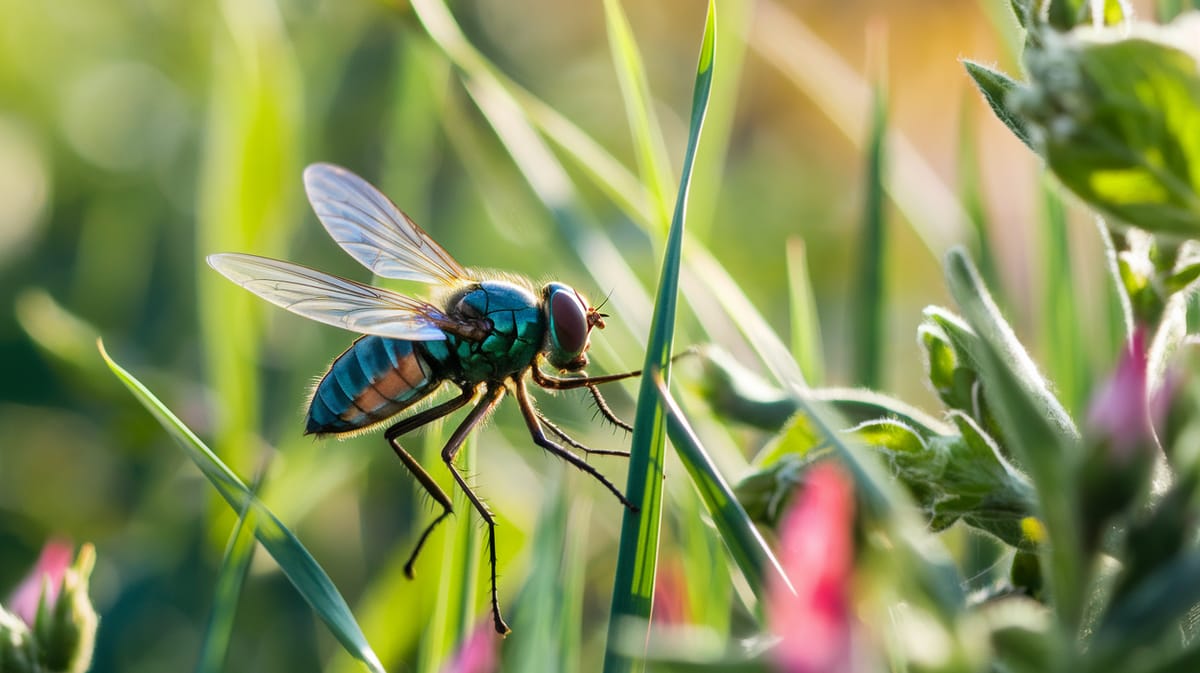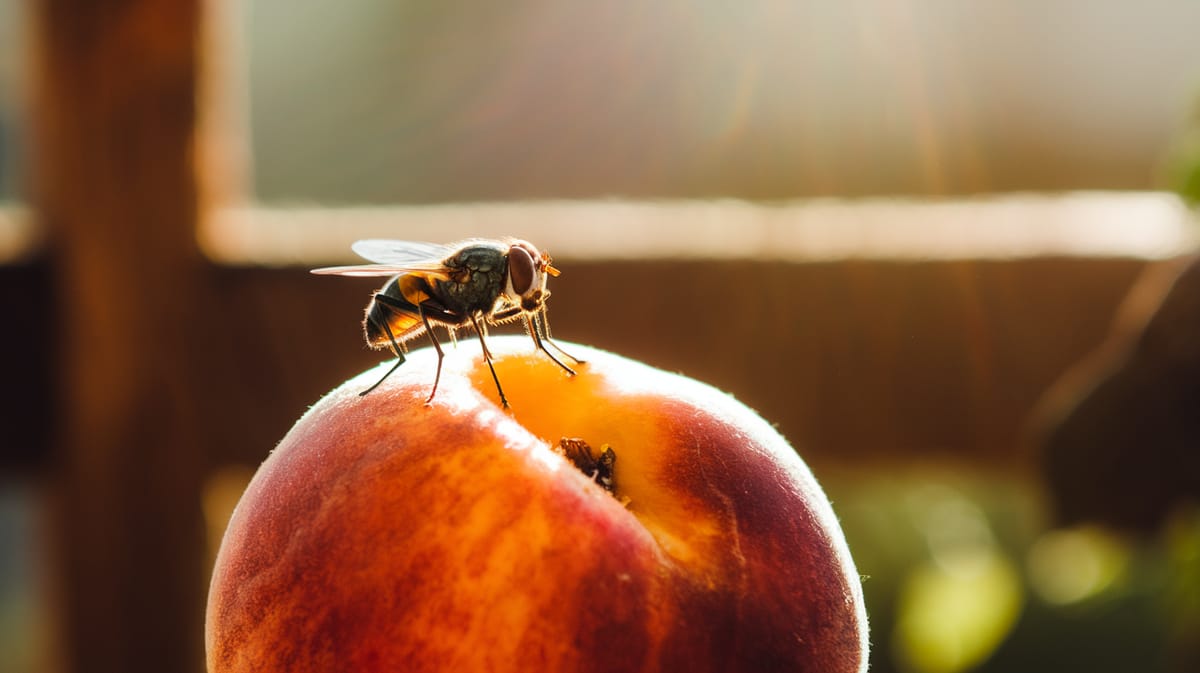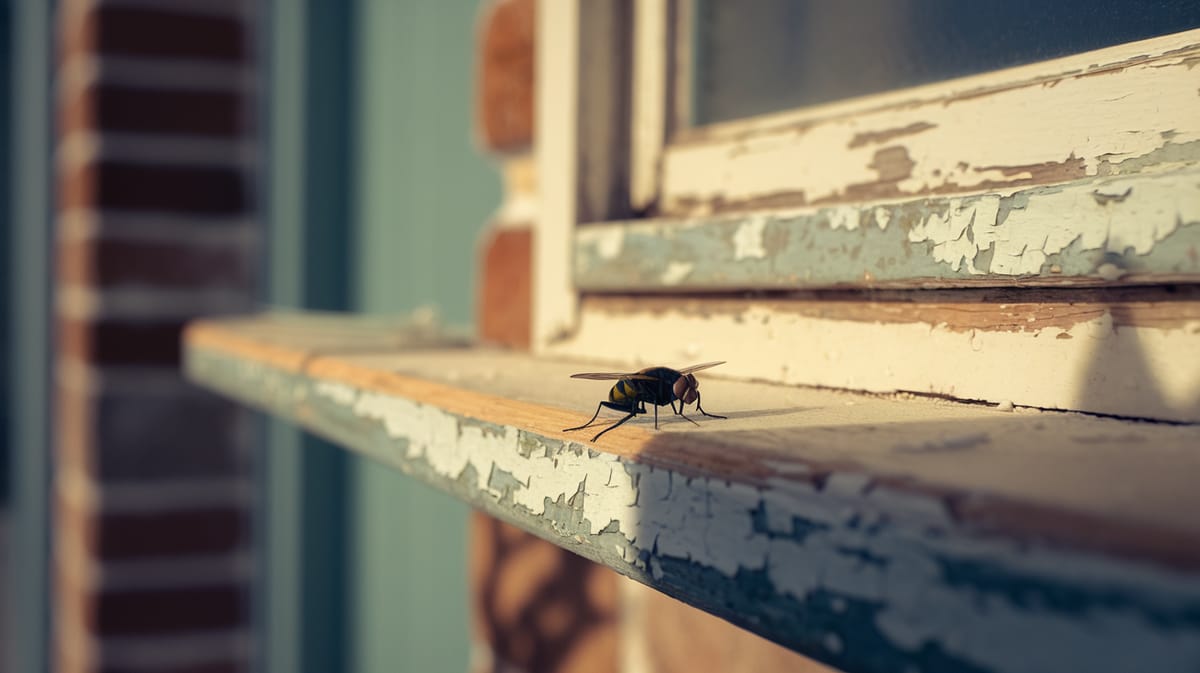Housefly
Masters of adaptation, houseflies thrive in diverse environments, transmitting nutrients and decomposing waste. Their buzzing presence reminds us of their integral role in ecosystems.

Key Insights at a Glance
Did You Know?
Taxonomy & Classification
Houseflies are efficient decomposers, equipped with unique mouthparts for liquid feeding and rapid reproduction, playing a crucial role in nutrient recycling. Let's understand the evolutionary journey and classification of these remarkable decomposers.
Global Presence
Houseflies, Musca domestica, are found on every continent except Antarctica, demonstrating their adaptability and widespread ecological impact.
Evolutionary Success
Originating over 65 million years ago, houseflies have thrived through climate shifts, evolving traits like rapid reproduction to survive and proliferate.
Lifecycle and Growth
A remarkable journey of transformation from Egg to Adult.
Egg
Laid in clusters, housefly eggs hatch quickly, initiating the lifecycle with a rapid transition to the larval stage.
Larva
Also known as maggots, larvae feed voraciously on decaying matter, growing considerably before pupating.
Pupa
Enclosed in a protective case, pupae undergo metamorphosis, developing adult features in a secure environment.
Adult
Fully developed, adult houseflies are equipped for flight and reproduction, driving the cycle forward.
Dietary Habits
A versatile feeder with unique adaptations, this insect thrives on decaying organic matter and sugary substances in various environments.
| DIET TYPE | DESCRIPTION |
|---|---|
| Primary Diet | Primarily consumes rotting fruit, vegetables, and human food waste, aiding in decomposition and nutrient recycling. |
| Secondary Diet | Occasionally feeds on plant secretions, animal feces, and other insects, supplementing its main diet. |
| Occasional | Rarely ingests animal carcasses or dairy products, depending on availability and environmental conditions. |

Behaviour and Adaptations
Discover the fascinating abilities that make the Housefly a master of survival.
Rapid Flight Maneuverability
Exceptional agility allows swift navigation and evasion, crucial for escaping predators.
Sensory Acuity
Compound eyes detect motion efficiently, providing a wide field of vision.
Fast Reproduction
Rapid life cycle ensures quick population growth, aiding survival in diverse environments.
Ecosystem Impact
Houseflies play a crucial role in maintaining ecological balance and sustainability.
Nutrient Recycler
Houseflies help decompose organic waste, recycling nutrients back into the soil.
Pollinator Support
Assist in pollination by visiting flowers for nectar.
Food Source
Serve as a key food source for birds, reptiles, and amphibians.
Conservation Challenges
Addressing the major threats impacting Housefly populations and their ecosystems.
Chemical Exposure
Pesticides and industrial chemicals harm housefly populations and disrupt ecosystems.
Habitat Degradation
Urban sprawl and pollution degrade environments crucial for housefly survival.
Climate Change
Shifting temperatures and weather patterns affect housefly life cycles and breeding.
Frequently Asked Questions
How long do Housefly live?
Houseflies typically live for about 15 to 30 days, depending on environmental conditions such as temperature and food availability. Their life cycle includes stages of egg, larva, pupa, and adult. Warmer temperatures tend to shorten their lifespan.
What do Housefly eat?
Houseflies consume a variety of foods, including decaying organic matter, human food, animal waste, and sugary substances. They use their sponge-like mouthparts to liquefy solid food with saliva before ingestion.
Are Housefly poisonous?
Houseflies are not poisonous, but they are potential carriers of harmful bacteria and pathogens. They can transfer these to surfaces and food, posing a risk to human health by spreading diseases like salmonella and E. coli.
Are Housefly endangered?
Houseflies are not endangered. They are widespread and abundant across the globe, thriving in various environments. Their adaptability and reproductive capacity contribute to their stable population numbers.
What do Housefly symbolize?
Houseflies often symbolize persistence, adaptability, and annoyance. In some cultures, they represent transformation and change. Their ability to thrive in adverse conditions can be viewed as a metaphor for resilience.
Do Housefly bite?
Houseflies do not bite humans. They lack the mouthparts necessary for biting. Instead, they feed by sponging up liquids. If bitten by a fly, it is likely another species, such as a stable fly.
What color are Housefly?
Houseflies are typically gray with black stripes on their thorax. They have red compound eyes and translucent wings. The colors may appear iridescent under certain lighting conditions due to their wing structure.
Does a Housefly have wings?
Yes, houseflies have one pair of wings used for flying. They belong to the order Diptera, characterized by a single pair of wings and hindwings modified into structures called halteres, which aid in balance during flight.
What does a Housefly look like?
A housefly has a grayish body, red compound eyes, and translucent wings. It measures about 6-7 mm in length. Black stripes run across its thorax. The body is covered in small hairs that help with sensing environmental changes.
Is a Housefly an insect?
Yes, a housefly is an insect. It belongs to the order Diptera, which encompasses true flies. Insects are characterized by a three-part body structure: head, thorax, and abdomen, as well as having six legs and a pair of antennae.
Related Insects
Discover insects with similar characteristics to Housefly - including shared habitats, diets, and taxonomic classifications
Share this profile
Help others discover Housefly
